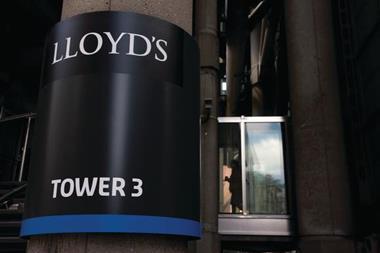Motor was the only Lloyd’s line that needed reserve strengthening in 2013
Lloyd’s reported a motor combined operating ratio (COR) of 108.6% in 2013, 4.6 percentage points worse than 2012’s 104%.
The deterioration was mainly caused by reserve strengthening, which added 4.2 points to the COR in 2013. By contrast, Lloyd’s was able to release motor reserves in 2012, which reduced the COR by 0.9 points.
Excluding reserve movements, the 2013 COR would have been 104.4% (2012: 104.9%).
Lloyd’s said in its 2013 annual report, released this morning, that motor was the only sector that required reserve strengthening.
The bulk of the Lloyd’s UK motor business is UK private car and commercial/fleet business. It also writes some international business – a large proportion of which is from North America.
Motor gross written premium at Lloyd’s fell by 2.5% to £1.18bn (2012: £1.16bn).
Future reserve hikes
Lloyd’s also warned that further motor reserve strengthening may be necessary. It said there was a risk that any changes to the discount rate used to determine large awards in bodily injury claims, in addition to high claims inflation levels, could affect current claims reserves in the future.
It noted that several legal reforms were introduced in 2013, including the Legal aid, Sentencing and Punishment of Offenders Act 2012 (Laspo), aimed at reducing bodily injury claims, but it added: “The overall impact of these remains highly uncertain”.
Motor was the only Lloyd’s line to report an underwriting loss in 2013. All other lines had CORs below 100%, and the market as a whole reported a profitable COR of 86.8%.
Motor business is also one of the smallest lines at Lloyd’s, accounting for 5% of total business in 2013.
Hosted by comedian and actor Tom Allen, 34 Gold, 23 Silver and 22 Bronze awards were handed out across an amazing 34 categories recognising brilliance and innovation right across the breadth of UK general insurance.










































No comments yet